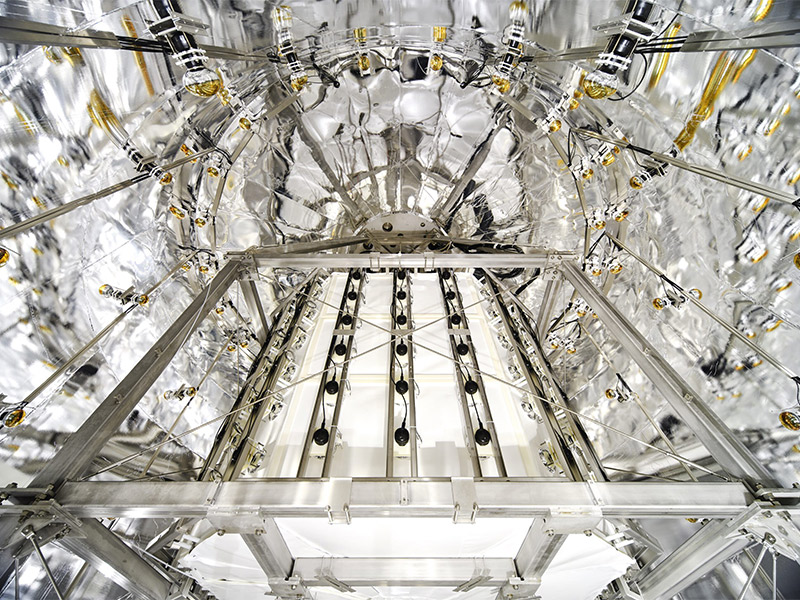The XENONnT experiment opens a new era of neutrino astronomy
https://english.univ-nantes.fr/medias/photo/xenon_1726071575154-jpg
-
Le 16 July 2024false false
The international XENON collaboration, involving the SUBATECH laboratory, has announced that it has captured and identified the passage of solar neutrinos. This type of detection, extremely rare and normally reserved for detectors 10 to 50 times larger, was made possible by the extreme sensitivity of the detector, designed to detect dark matter. It is so sensitive that it can feel not only the nuclear reactions between neutrinos and nucleus constituents, but also the much more frequent tiny shocks that certain neutrinos inflict on the entire nucleus. A first that promises to revolutionize neutrino astronomy.
The XENONnT experiment is able to see solar neutrinos because it is designed to detect the rarest events, such as an interaction with a hypothetical dark matter particle. It has a “reaction center” (the white cylinder in the image) containing an active volume around 1.5 m high, filled with liquid xenon. It is capable of distinguishing the tiniest phenomena, but to be truly effective, it must be isolated from any external disturbance. It is therefore surrounded by a water reservoir (aluminized envelope) and nestled in the Gran Sasso underground laboratory (LNGS) at a depth of 1400 m. Credit XENON Collaboration 
The XENONnT experiment is able to see solar neutrinos because it is designed to detect the rarest events, such as an interaction with a hypothetical dark matter particle. It has a “reaction center” (the white cylinder in the image) containing an active volume around 1.5 m high, filled with liquid xenon. It is capable of distinguishing the tiniest phenomena, but to be truly effective, it must be isolated from any external disturbance. It is therefore surrounded by a water reservoir (aluminized envelope) and nestled in the Gran Sasso underground laboratory (LNGS) at a depth of 1400 m. Credit XENON Collaboration

Mis à jour le 16 September 2024.
